NATO's Largest Military Exercise Air Defender 23

The largest-ever military exercise in NATO’s history, Air Defender 23, concluded in Germany on June 23, 2023. More than 250 aircraft and 10,000 personnel from 25 different countries participated in the exercises.
As the Russia-Ukraine war continues a couple of borders away, NATO spent the better half of its last two weeks focusing on bolstering its aerial defense in Europe. The Air Defender 2023 was hosted by German Air Force and was spread over three regions in Western Europe. Some of the exercise activities also took place in the Czech Republic, Estonia, and Latvia.
The aim of such a massive military drill was to create scenarios involving air warfare operations for allied air forces. Air Defender 23 focused to assess the participants' joint airborne response to hypothetical emergency scenarios. In this context, Germany acted as a collective defense hub for European airspace.
The large-scale exercise also tested the military's ability to react and act in the air in a resilient manner and to be able to protect the population from medium-range missiles.
The exercise featured real-world simulated combat. It tested the interoperability of the NATO forces through a fictional scenario in which an alliance of Eastern European countries invades Germany, triggering an international response to push back the imaginary belligerents.#AirDefender23 has concluded successfully. The largest air force deployment exercise in NATO history involved 250 aircraft from 25 countries & more than 10,000 participants.
— German Embassy London (@GermanEmbassy) June 23, 2023
Of 2,000 planned flights 1,800 took place. No civil flights had to be cancelled.pic.twitter.com/Ln5xIFVuZP
The three main hubs during Air Defender 23 were Schleswig/Hohn, Wunstorf, and Lechfeld, while the participating nations conducted their operations from seven different sites:
• Jagel in Schleswig-Holstein (Germany)
• Laage in Mecklenburg-Western Pomerania (Germany)
• Wunstorf in Lower Saxony (Germany)
• Lechfeld in Bavaria (Germany)
• Spangdahlem in Rhineland-Palatinate (Germany)
• Volkel in the Netherlands
• Caslav in the Czech Republic
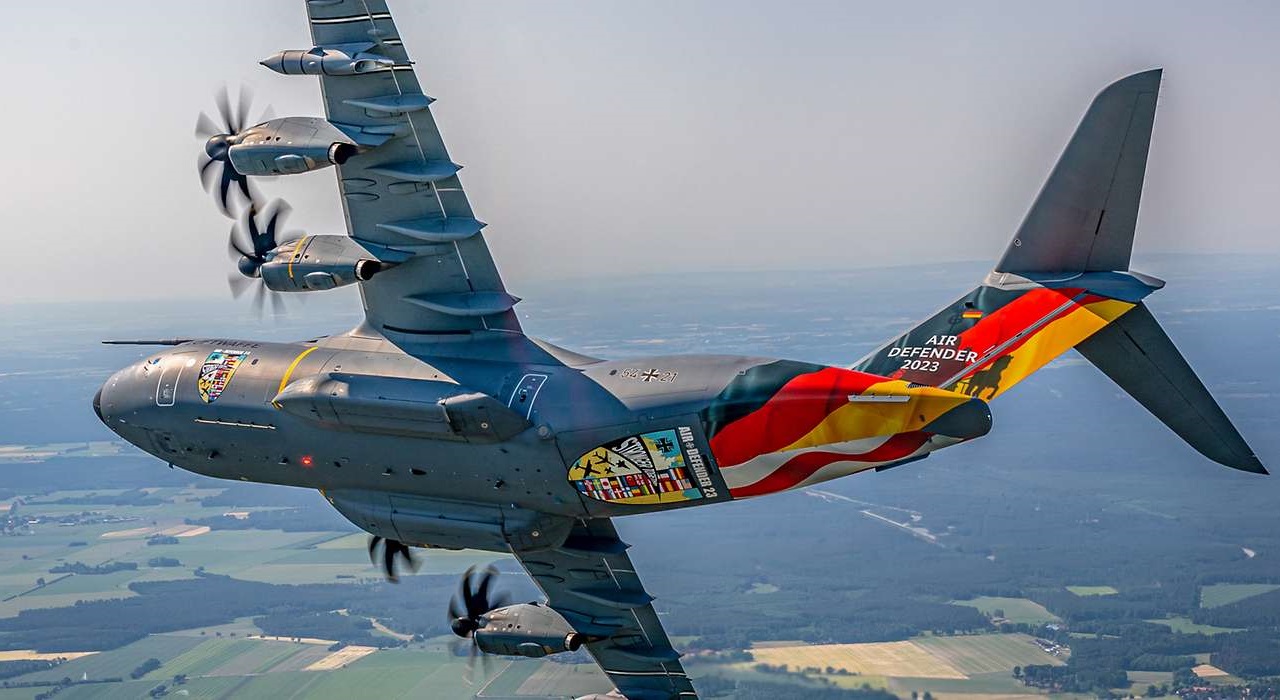 German aircraft flying during Air Defender 23 Exercise. (Image Credit: Bundeswehr/Zentrum Luftoperationen PAO)
German aircraft flying during Air Defender 23 Exercise. (Image Credit: Bundeswehr/Zentrum Luftoperationen PAO)The German Defense Ministry described the fictional scenario of the exercise by stating that the participants practiced “how to respond when an enemy military alliance occupies part of Germany.” The allied aircraft and personnel assumed different roles within the scenario and the participants conducted more than 200 missions every day with a combination of several aircraft types with different capabilities, including bomber aircraft, reconnaissance planes, fighter jets, and tanker aircraft.
According to the Defense Ministry, the Eurofighter aircraft participated in the exercise by assuming an offensive air defense role and used multi-role capabilities to engage enemy aircraft and targets on the ground. The participating aircraft neutralized fictional enemy air defense and supported allies’ air operations and deployment of special forces, including combat swimmers and paratroopers. The Allies also conducted electronic warfare training and used Multinational Aircrew Electronic Warfare Tactics Facility, located in France and Germany.
Germany’s Wunstorf air base played a critical role in the Air Defender 23 exercise as it offered logistics support to all the participants. The air base is the main hub of the transport and tanker planes and is home to the German A400M transport aircraft.
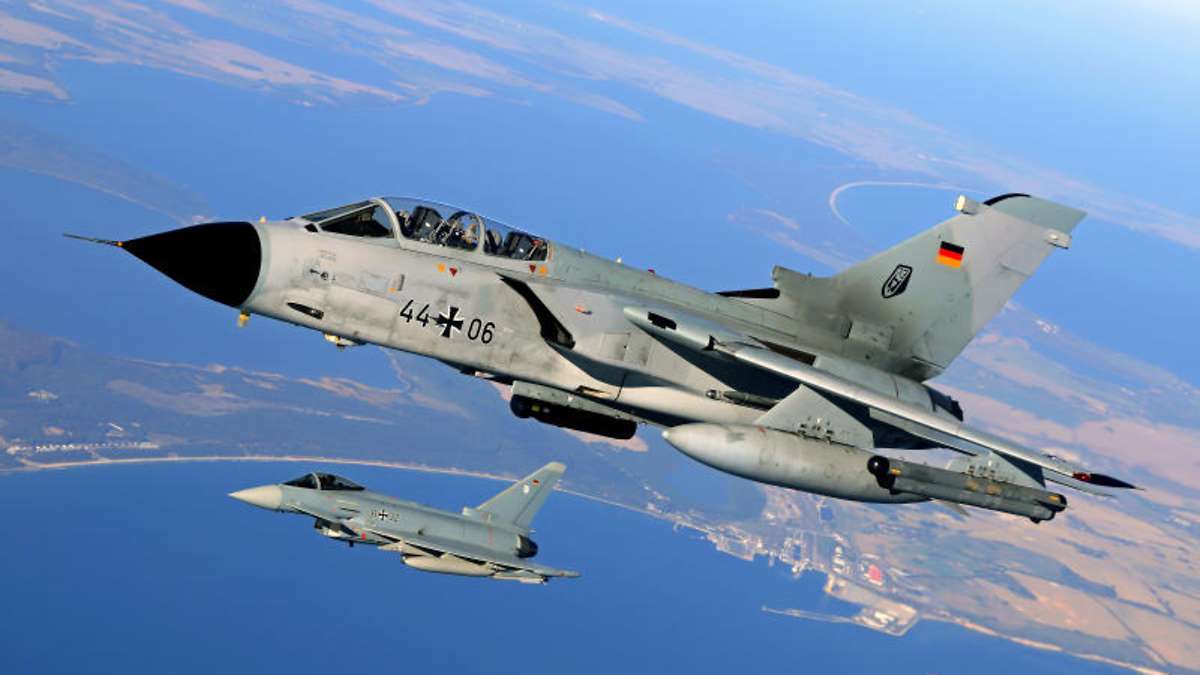 Tornado and Eurofighter in formation: In composite air operations, combat aircraft with different capabilities are employed in combination during Air Defener 23 Exercise. (Image Credit: Bundeswehr/Stefan Petersen)
Tornado and Eurofighter in formation: In composite air operations, combat aircraft with different capabilities are employed in combination during Air Defener 23 Exercise. (Image Credit: Bundeswehr/Stefan Petersen)The flying altitude during the drills remained at 2,500 to 15,000 meters. Some exercises also included mid-air refueling missions that usually take place at an altitude of 2,500 or 3,000 meters, depending on the airspace activated.
The United States participated with the largest contingent of fighter jets and military planes ranging up to 100 aircraft, mostly from the U.S. National Air Guard and the U.S. Air Force. The U.S. contingent consisted of F-35, F-16, F-15, A-10, KC-135, KC-46, C-130, and C-17 aircraft. U.S. Air Force’s B-1 Bomber and MQ-9 drones also joined the exercises.
One of the main highlights of the exercise was the mid-air refueling mission. Many of the U.S. fighter jets and combat aircraft like the F-35, F-15, F-16, and A-10, do not carry enough fuel to cross an ocean on their own. The U.S. Air National Guard practiced real-life scenarios of using their KC-135s refueling jets to ensure the aircraft can keep flying over the Atlantic Ocean without having to land.
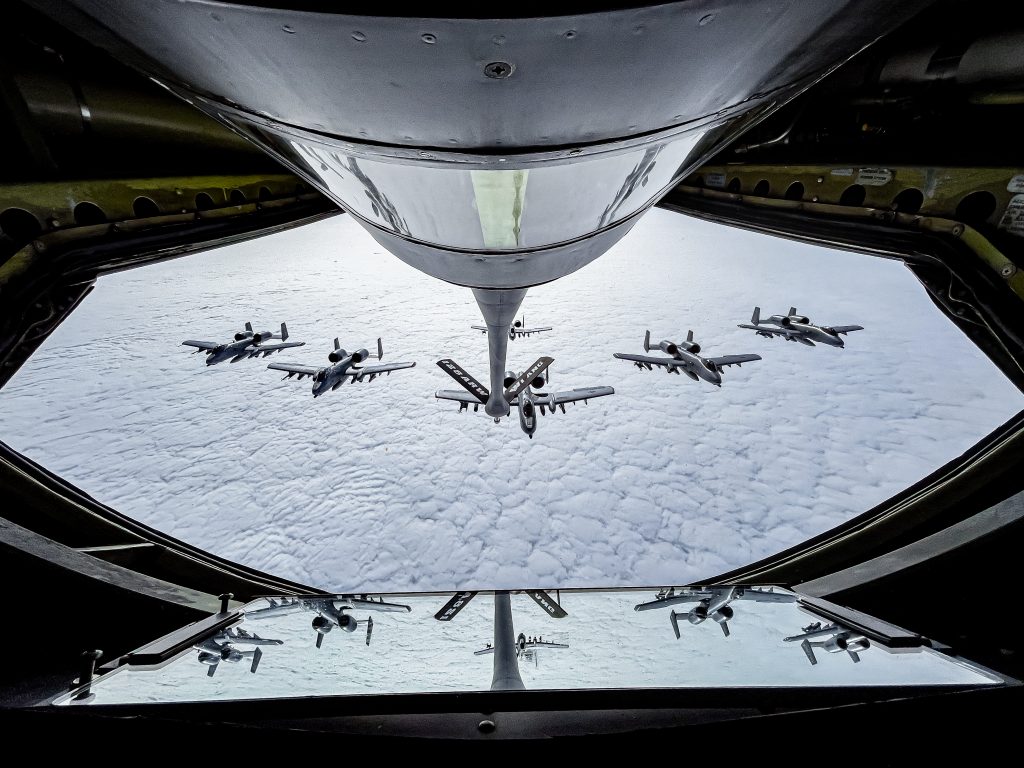 A U.S. Air Force A-10 Thunderbolt II aircraft assigned to the 127th Wing, Michigan National Guard, fly in formation behind a KC-135 Stratotanker assigned to the 128th Air Refueling Wing, Wisconsin National Guard, June 5, 2023. Exercise Air Defender integrates both U.S. and Allied air-power to defend shared values, while leveraging and strengthening vital partnerships to deter aggression around the world. (Image Credit: U.S. Air National Guard/Master Sgt. Lauren Kmiec)
A U.S. Air Force A-10 Thunderbolt II aircraft assigned to the 127th Wing, Michigan National Guard, fly in formation behind a KC-135 Stratotanker assigned to the 128th Air Refueling Wing, Wisconsin National Guard, June 5, 2023. Exercise Air Defender integrates both U.S. and Allied air-power to defend shared values, while leveraging and strengthening vital partnerships to deter aggression around the world. (Image Credit: U.S. Air National Guard/Master Sgt. Lauren Kmiec)NATO’s newest member Finland also joined the Air Defender 23. This was the first time that Finland joined a large-scale exercise with its NATO partners since becoming a member of the alliance earlier this year. A detachment of four Finnish F/A-18 Hornet multi-role fighters operated out of Hohn Air Base, located in Schleswig-Holstein in northern Germany.
According to German Defense Minister Boris Pistorius and NATO officials, the Air Defender 23 was in the works for more than four years, long before the Russian invasion of Ukraine started in 2022. However, the ongoing war in Ukraine made the exercise ever so important as NATO Allies are enhancing defense and deterrence across Europe.
The NATO statement highlighted that "Up to 10,000 participants from 25 NATO Allies and partners with 250 aircraft" convened in Germany to practice integrating air operations. Exercise Air Defender 23 enabled Allied air forces to deliver "coordinated air power in the event of a crisis." The NATO statement added that the drills in Germany also strengthened "interoperability and preparedness to protect against aircraft, drones and missiles attacks on cities and critical infrastructure."
The outgoing NATO Chief Jens Stoltenberg visited Germany towards the end of the exercise and met with the German Defense Minister Boris Pistorius at an air base near Jagel, in northern Germany. They declared the exercise a “great success” as Pistorius said that Moscow "is sure to see and hear a lot of what is going on here.”❝NATO is ready to defend every inch of Allied territory, and every inch of Allied airspace❞@jensstoltenberg visits #AirDefender23, the largest multinational air defence exercise in NATO’s history#WeAreNATO | #AD23
— NATO (@NATO) June 20, 2023
Recalling the importance of air defense, Stoltenberg explained this exercise shows “NATO is ready to defend every inch of Allied territory, and every inch of Allied airspace,” with forces from Europe and North America training together. “It is a strong display of Germany’s commitment and capabilities,” the NATO secretary general said.
According to the German Air Force, more than 90% of the planned 2,000 sorties were carried out successfully. Germany's air force chief, Lieutenant General Ingo Gerhartz told reporters that there were some IT issues at the start of the exercise. It took a couple of days to get it right.
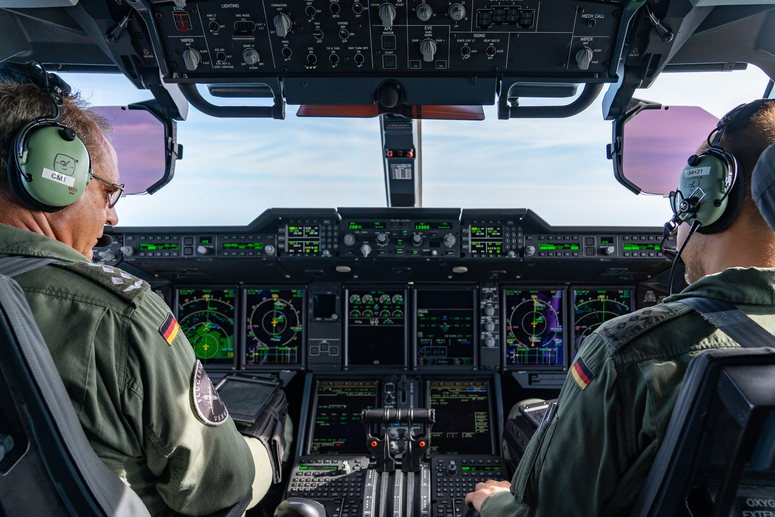 German Air Force A400M pilots conduct manoeuvre on the A400M. (Image Credit: NATO)
German Air Force A400M pilots conduct manoeuvre on the A400M. (Image Credit: NATO)Lieutenant General Gerhartz said, "This exercise, Air Defender 2023, was a total success. Not just tactically, but what personally really impressed me was the human level." He noted the importance of on-ground exercises by saying that "You can't just simulate this, you have to actually practice it.”
Apart from the NATO member countries, Sweden, which seeks to become a NATO member, and Japan also took part in the drill. Several speculations had been circulating about Japan’s addition to the NATO alliance following the news of its participation in NATO’s military drills, however, Japan’s Prime Minister Fumio Kishida has rejected the possibility of Tokyo being a full member of the NATO alliance. A NATO liaison office is expected to open in Japan soon, to which the Japanese administration has agreed.
Air traffic disruption
As NATO’s largest-ever two-week-long aerial exercise took place over the European skies, large blocks of airspace were closed to civil air traffic. As more than 2,000 sorties took the skies over the course of two weeks, the German sky became one of the most crowded airspaces in the world. Approximately 800 civilian flights were rerouted or canceled following the air drills.
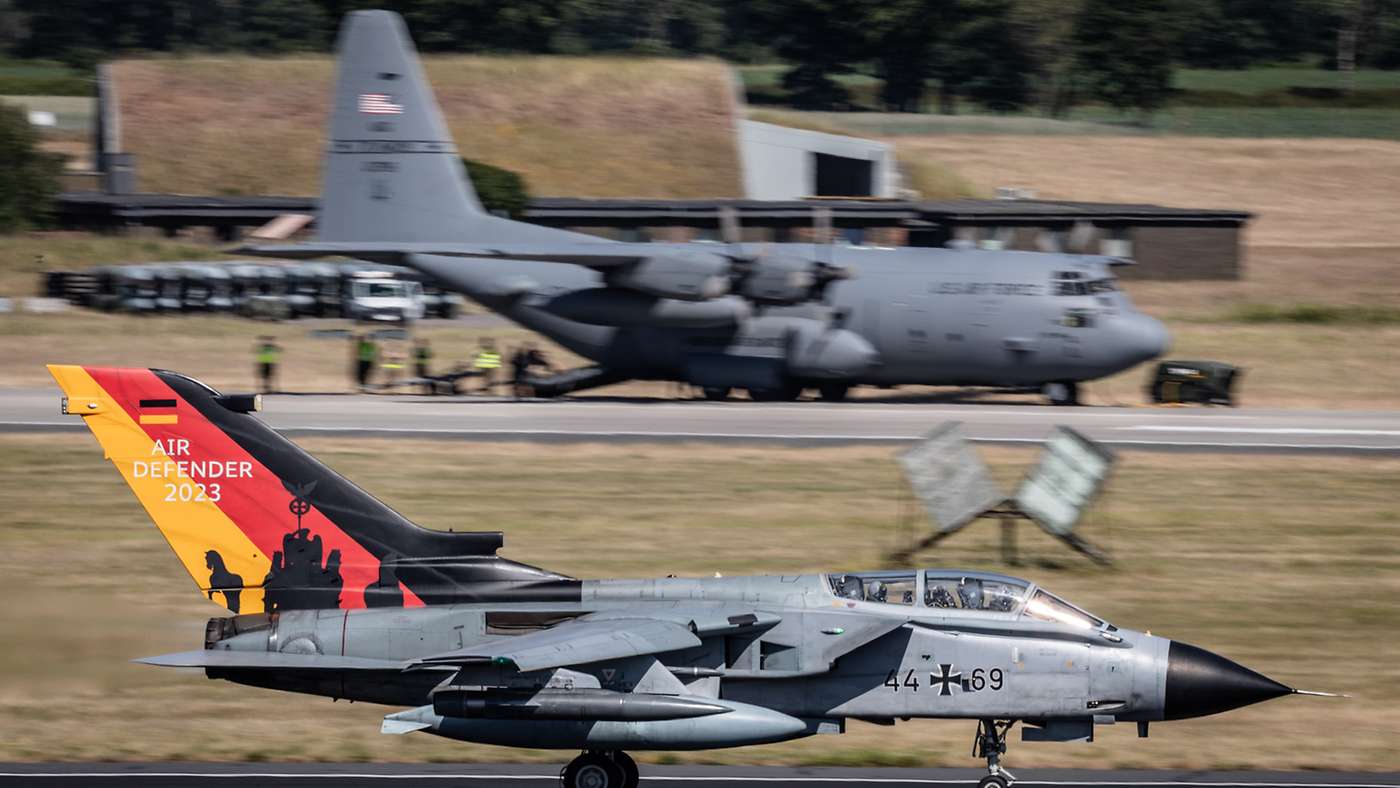 German fighter jet landing during Air Defender 23 Exercise. (Image Credit: Bundeswehr/Jane Schmidt)
German fighter jet landing during Air Defender 23 Exercise. (Image Credit: Bundeswehr/Jane Schmidt)A spokesperson for Germany's civilian air traffic controller Ute Otterbein said that the NATO planes resulted in 22,000 "delay minutes" for commercial flights. Otterbein said that "We performed much better than we first feared." He said German civilian air traffic controls and European partners were anticipating more than 95,000 delay minutes during the exercise.
Civilian pilots had been advised to avoid three main clusters over the European skies during the exercises. 1) North, extending into Danish and Dutch airspace; 2) East, close to the Polish and Czech borders; and 3) South, from Luxembourg along the French frontier, as far as Lake Constance.
The South cluster was the most affected by the rerouting of the flights as it is the main route for many commercial holiday flights from Western Europe to Southern Turkey and Greece.
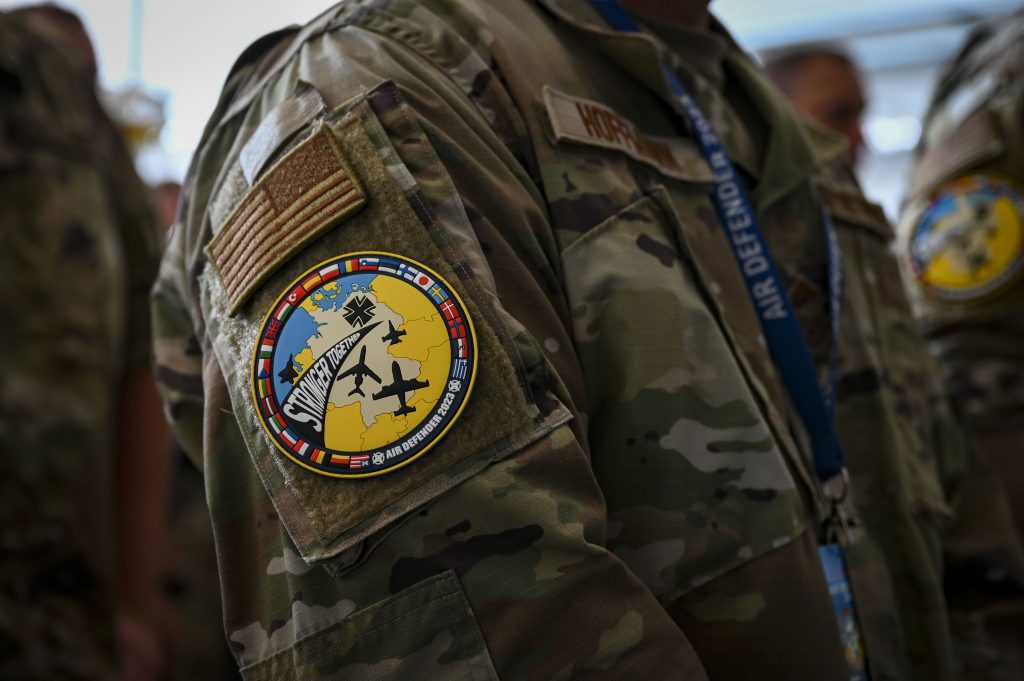 U.S. Air Force Chief Master Sgt. David Hoffman, chief of operations, assigned to the 165th Communications Squadron, 165th Airlift Wing, Georgia National Guard, wears an exercise Air Defender 2023 morale patch on his right sleeve during the Nation's Day celebration hosted June 10, 2023 at Wunstorf Air Base, Germany. (Image Credit: U.S. Air National Guard/Master Sgt. Caila Arahood)
U.S. Air Force Chief Master Sgt. David Hoffman, chief of operations, assigned to the 165th Communications Squadron, 165th Airlift Wing, Georgia National Guard, wears an exercise Air Defender 2023 morale patch on his right sleeve during the Nation's Day celebration hosted June 10, 2023 at Wunstorf Air Base, Germany. (Image Credit: U.S. Air National Guard/Master Sgt. Caila Arahood)ALSO READ:
Regions
Issues

















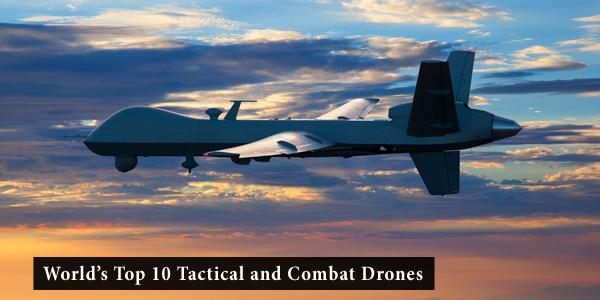 World’s Top 10 Tactical and Combat Drones
World’s Top 10 Tactical and Combat Drones NATO strengthening ties with Japan and ROK
NATO strengthening ties with Japan and ROK







